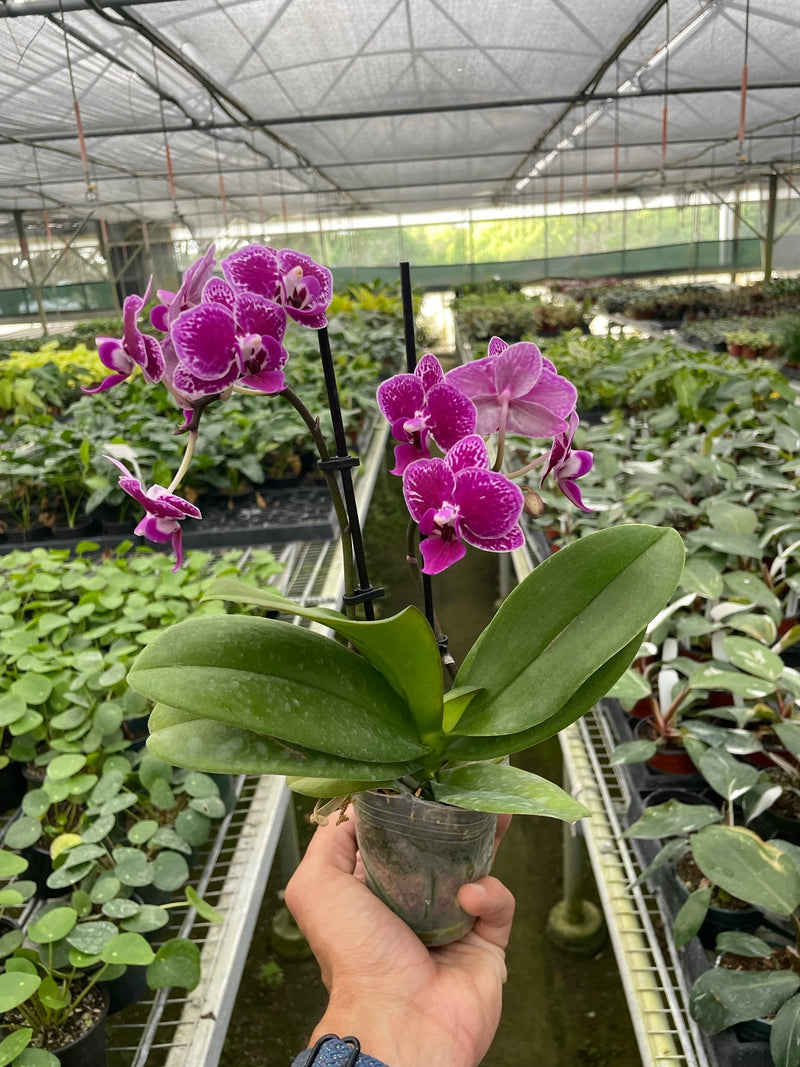Orchid 'Purple Spotted Phalaenopsis'
Couldn't load pickup availability
The Purple Spotted Phalaenopsis Orchid is a striking variety within the Phalaenopsis genus, admired for its unique and vibrant purple blooms often speckled or spotted with contrasting colors. This variety encapsulates the exotic beauty of orchids, combining the ease of care associated with Phalaenopsis orchids with the visual appeal of its distinctive flowers. Like other Phalaenopsis orchids, the Purple Spotted variety thrives under specific but manageable conditions.
🌿 Botanical Name: Phalaenopsis spp.
💧 Care Level: Moderate. Phalaenopsis Orchids are known for being relatively easy to care for, making them a popular choice for indoor gardeners of various experience levels.
📏 Size: This orchid can reach a height of 12-24 inches (30-60 cm), with bloom spikes that may extend above the foliage. The flowers themselves can be 2-5 inches (5-12 cm) in diameter and appear on graceful, arching stems.
☀️ Light: Prefers bright, indirect light. Direct sunlight can harm the leaves, while too little light can prevent the orchid from blooming. An east or west-facing window, shielded by sheer curtains, is typically ideal.
💧 Water: Water about once a week, allowing the top inch of the potting medium to dry out between waterings. It's important to avoid letting the roots sit in water, as this can lead to root rot.
💦 Humidity: Thrives in higher humidity environments, ideally between 60-80%. You can increase humidity around the plant by placing it on a pebble tray with water or using a humidifier.
🌡️ Temperature: Prefers warm daytime temperatures between 65-80°F (18-27°C) and cooler nighttime temperatures between 60-70°F (15-21°C). Avoid exposing the orchid to drastic temperature changes or drafts.
🌱 Soil: Use an orchid-specific potting mix, typically consisting of bark, sphagnum moss, and perlite, to ensure proper drainage and aeration for the roots.
🌱 Fertilizing: Fertilize with a balanced, water-soluble orchid fertilizer, diluted to half strength, every 1-2 weeks during active growth periods in the spring and summer. Reduce fertilization frequency during the fall and winter.
🔄 Pruning: After the orchid has finished blooming, you can encourage new flowers by cutting the spike above the second or third node from the bottom. If the spike turns brown and dries out, cut it at the base.
🍃 Pests and Diseases: Be vigilant for pests such as aphids, mealybugs, and spider mites. Proper watering practices are crucial to avoid issues like root rot.
Propagation: Propagation of Phalaenopsis Orchids typically involves the separation of keikis (baby plants) that may grow along the flower spike. Once a keiki has developed a few roots and leaves, it can be carefully removed and potted in its own container with orchid potting mix.



Orchid 'Purple Spotted Phalaenopsis'


